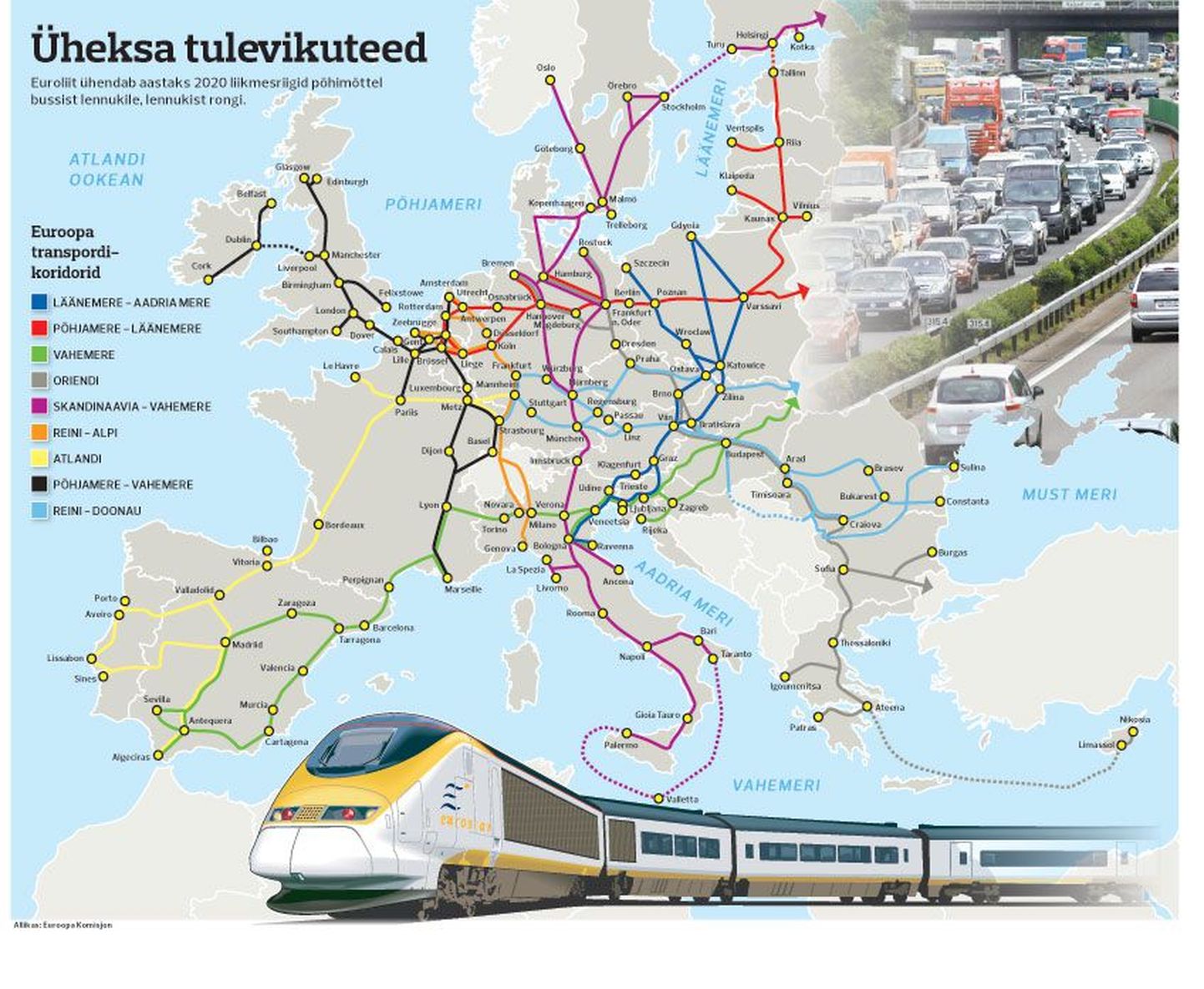The new speed railway and the Via Baltica motorway running parallel to that will form skeleton to the new North-South transportation network, building a bridge to Poland and Central-Europe.
Mr Kallas esteems cross-border railway and highway networks to be very important. Ports, inland waterways and airports as well. In European eyes, it is not merely Tallinn that is important as an airport hub; Tartu, Pärnu, Kuressaare and Kärdla are vital as well. Among ports, Heltermaa, Kuivastu, Pärnu, Paldiski South Harbour (Lõunasadam), Rohuküla, Sillamäe and Virtsu are considered in addition to Tallinn.
«The above has been the most important labour and achievement, for the European Commission, not easy in coming,» acknowledged Mr Kallas. As the network plan went to parliament, 1,000 amendments were proposed. Mr Kallas praises European parliament in its support and steadfastness, at it managed to stand for the pan-European, not an overly regional philosophy.
The commissioner added that the growth of infrastructural finances, while overall budget shrunk, was result of mighty political battling. As all other wanted money too. «It’s not a large group with shiny eyed people thinking alike. The eyes indeed shine, but the thought go various ways when it comes to investment priorities,» said Mr Kallas.
• TEN-T stands for Trans-European Transport Network. In European railways, seven various track widths are in use; only 20 major airports and 35 major harbours have direct connections to railway.
• TEN-T Days take place for the 6th time. During the three days in Tallinn, the experts discuss ways of making traffic smoother, faster and safer for the average citizen, while considering the roles of innovation, logistics and new fuels such as LNG.

